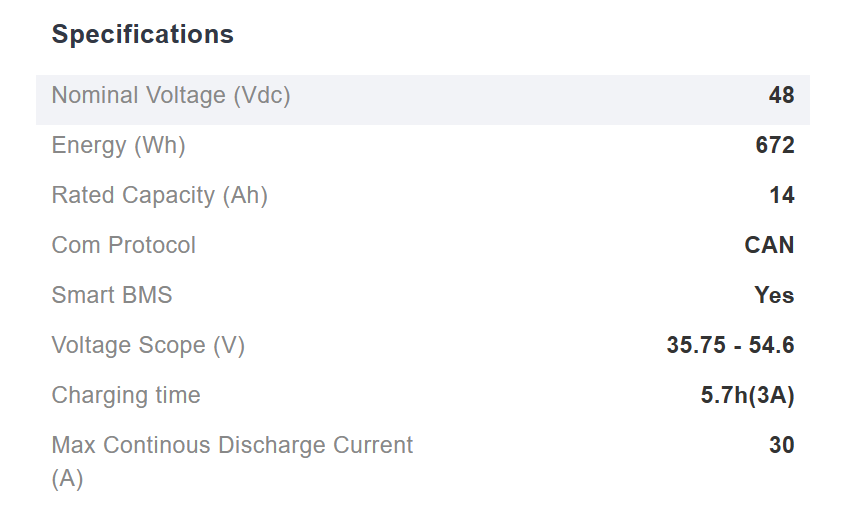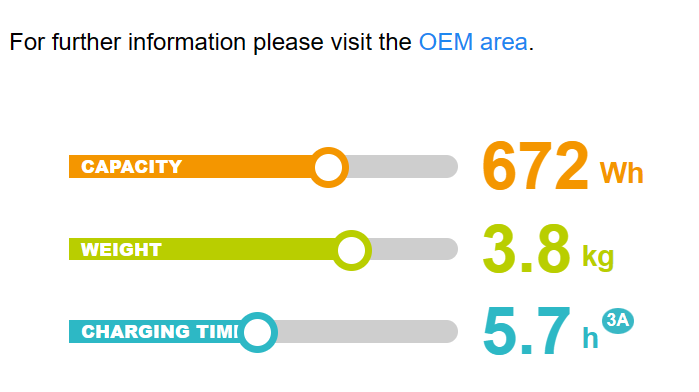Understand the Basic: E-bike Battery Explained
In the last few articles, we've talked about the motor system in electric bikes, which is powered by a battery that has not yet been mentioned.
Today, we'd talk in detail about electric bike batteries.

Bafang battery BT F010
In a transition from the days of bulky lead-acid batteries to lithium-ion batteries (LI-ION), most electric mountain bikes on the market today use lithium-ion batteries, which have the advantages of light weight, large capacity and long lifespan.
The quality and positioning of a battery has a lot to do with these terms: voltage, capacity, energy, cell, battery pack, Battery Management System (BMS).
In general, the voltage of an e-bike is between 36 and 48 volts. Battery capacity is expressed in ampere hours (Ah). Battery capacity (Ah) x battery voltage (V) = battery energy (Wh), watt-hours (Wh) is a measurement unit of total battery energy. Assuming a battery voltage of 36V and a capacity of 13.6 Ah, that would be 13.6*36=489.6, or 489.6 watt-hours, which is about 0.5 KWh, or about half a KWh of electricity.

Whether it is an external battery or an integrated battery, what we see as a "battery" is really just the case of the battery pack. Inside the shell, there is a dense array of cells and BMS. The cell is the smallest unit in a battery and the critical part determines its performance. Currently, electric mountain bikes on the market typically use 18650 lithium-ion battery cells. 18650 is the specification model of the battery cell (diameter of the battery cell is 18mm, and length is 65mm). Such batteries are characterized by long lifetime, large capacity per unit density, and stable working performance. Tesla, the famous electric vehicle brand, uses these cells throughout the car to guarantee endurance as well.
No matter how good the quality of battery cell is, as the time goes by, there will be some errors between the battery cells. With the application of the BMS, the damage of the battery in the process of using can be reduced to a minimum. It is responsible for managing the charge and discharge of the battery, so as to extend the life of the battery.

Now that we understand these technical terms of e-bike batteries, how do you choose a good one, as far as battery selction is concerned? Cyclists may focus on the following aspects of the problem.
Price: In general, battery quality and cost go hand in hand, and if you want a high-quality battery, you will have to compromise on a higher price. Choose some well-known brand cell manufacturers such as Samsung, LG, and Panasonic, not only because of their name popularity but also because they occupy a large portion of the market and can provide better quality assurance and after-sales services.
Battery composition: Currently the most widely used battery is li-ion battery, but "lithium ion" covers a variety of chemical substances, the most common two are NMC and LI-FePO4 (LFP). Both materials have relatively good stability, which is recognized by the market and manufacturers.
Weight and volume: Many cyclists who ride e-bikes want a battery with a large capacity and volume to meet their needs for long-distance cycling. In fact, if the power gear is used properly, the amount of electricity consumed during the ride will also be reduced, which will increase the e-bike's endurance range. However, too heavy and large a battery will increase the weight of the e-bike and add to the burden during the ride.

Position: Large-capacity electric mountain bike batteries are heavy, and many manufacturers design them to balance the center of gravity between the two wheels. Also, whether the battery is integrated or not is a concern. Integrated batteries give the frame a smoother line, which plays to cyclists' demands for a stylish electric mountain bike.

Range: Frey Evolve, for example, has a 48V14Ah (672Wh) battery capacity, which gives cyclists a maximum range of about 100kms if they use the gear correctly and change the gears properly, making it more than perfect for long-distance cycling.
Concerns about batteries have also been linked to maintenance issues. We have previously mentioned the use of power gears and charging and discharging methods. Later we will also write a detailed article on battery maintenance for electric bikes. Please look forward!
Again, We sincerely hope you can Free Ride & Enjoy Yourself!
Comments
Post a Comment